Genre: RPG Developer: FTL Games/Software Heaven Publisher: JVC Players: 1 Released: 1994
Wading through the western selection of Sega CD RPGs can be somewhat daunting for gamers raised on titles coming from Japan. Most of what is available consists of computer ports that make little effort to compensate for the simpler controls of a console game pad. This often results in games that look decent but play horribly, and the overly complex control schemes assigned to too-few buttons causes many would-be adventurers to run back to Lunar.
Some titles, like the excellent Eye of the Beholder, compensate for this by offering customizable controls. EotB allows players to map movement to the D-pad, which makes the game infinitely more playable than through the arrow menus designed for a computer mouse. Granted, one may play with the under-used Mega Mouse if one so desires, but how many people actually have one of those lying around? FCI knew how to impact the largest audience possible, and adding that simple control option made playing Eye of the Beholder not only easier but just as much fun as it was designed to be. That’s how developers should tackle a project like this. They should strive to keep the experience as close to the original as possible while making it as accessible to the new audience as possible. FCI kept this in mind when it ported Eye of the Beholder, and the result was an excellent console port of a classic PC RPG.
FTL Games was wise enough to heed that example and offer alternatives for Dungeon Master II: Skullkeep, most likely anticipating the difficulties of porting a PC control scheme to console. Two options are included, with the simplest involving holding down the C button for normal movement and pressing it and the mode button simultaneously for strafing. Using the six-button controller, players can even customize the button scheme to their liking. The other option is to use the mouse, which makes the game play more true to its PC roots. Regardless of the gameplay type chosen, these additions mean that the overwhelming majority of players even willing to tackle this monster won’t have to suffer through a cumbersome game pad conversion of the directional arrow menu originally used on PC. Maneuvering the stock arrow icon with the D-pad is painfully slow, and alternating between strafing and turning can be a very frustrating experience. Without the C-button mode or mouse, or worse, with only a three-button controller, getting started can seem like more trouble than it’s worth.
It’s unfortunate that the stock control scheme might turn off many players before the story can even begin, given how simply it can be remedied. Moreover, RPG fans who don’t give DM2 a chance are missing out on one heck of a game. Players assemble a party of four adventurers who must stop evil forces from assembling the Zo Link, a device that permits travel to other dimensions. Dragoth’s evil minions are attempting to assemble the Link in order to facilitate his return to Earth. The player must take his party to Skullkeep and reassemble the Zo Link before Dragoth’s forces can. The object is to use it to enter the Void and defeat him before he is able to cross over to our dimension.
The game is played out over a massive, multi-story complex that features both indoor and outdoor environments. DM2 does an excellent job of creating the kind of deep dungeon RPG atmosphere such a game requires, and there are little details everywhere that combine to that effect. The Sega CD’s audio power is put to good use here, as there are some wonderful sound effects to complement the bright and detailed visuals. For instance, when the party steps outside for the first time, they find themselves in a thunderstorm. The redbook CD stereo audio sounds great, with distant thunder rumbling in the background and the patter of the rain on the ground. Visibility is limited except during lightning strikes, when the area lights up. Inside, there are also neat little audio touches, like the arms dealer replying “uh-uh” when insufficient funds are offered for his wares. DM2’s engaging soundtrack and ambiance require more than just TV speakers for one to fully appreciate their quality.
Games like Eye of the Beholder emulated DM2’s interface, and it became quite common among PC RPGs of the time. Lamentably, this means that console gamers used to more modern interfaces will need to adjust to this much-different style of play (PC veterans will feel right at home). Characters must be placed in the party according to their skill set or they’ll be ineffective in combat. For example, mages are best left to the back row where they can cast spells from a safe distance. Sword and axe-wielding fighters should be placed up front. Party members level up by increasing their skills through combat, so putting each member in the correct position is vital for ensuring balanced leveling. Personally, I’d rather use brawlers for this game, and those in the back row can make themselves useful by using bows rather than spells. Characters can also duel wield, which adds much-needed speed to front row attacks.
Magic use is also affected by party placement, though I found it too much work to be bothered. To cast spells, characters must have enough mana points. Players select symbols to form a chant, and this in turn creates the spell. If the wrong symbols are chosen and the spell fails, or if the chant is canceled, the mana points are still used up. The process can be excruciatingly slow, especially while under attack. I’m sure there are those out there who swear by mages, but my group is all about hacking and slashing anything that moves.
And the time taken to set up the party’s combat dynamic will not be in vein. Enemies are numerous and highly intelligent. The enemy A.I. was designed to allow enemies to join together to take on a more powerful threat, attack strategically and even heal themselves in real time. This happens often, though not as much as the developers initially claimed. However, monsters most certainly do pursue, of that I am certain. Frantically backing away from a group of enemies that is converging rapidly is a problem that can lay waste to one’s party if a wrong turn is taken. It’s best to draw foes out one by one and take them down. The hit-and-run tactic of whacking a foe and backing away – so often used in dungeon crawlers – works very well here, especially with dual-wielding melee fighters.
There is also a ton of items to use, so it would be wise to use a FAQ to maximize playtime and effectiveness. Trust me; doing so won’t dampen the experience. The game is hard, even with the extra help. There are plenty of walkthroughs available, and they (and their maps) will be appreciated, especially at the beginning. DM2 has a pretty steep learning curve, and going it solo can potentially lead to unnecessary frustration. However, once this curve is overcome, the game settles into a highly playable adventure that will have players gripped with that “just one more level” mentality so prominent in well-crafted dungeon crawlers. One negative note: Dungeon Master 2 uses 100 blocks of the Sega CD’s memory, and it’s not compatible with the backup RAM cartridge. That’s simply inexcusable for a 1994 release. Due to this incredible oversight, players must be sure to back up whatever is in the machine’s memory on the cartridge before popping the game in. It can always be copied over when it’s time to play something else.
Other than the lack of RAM cartridge compatibility, I do have a couple of other complaints that while minor, keep the game from being much better than it is. The first is the insistence of including stock PC RPG conventions such as food rationing and diminishing light sources. I have no interest in stockpiling torches or munchies, so why make me do it? I wasn’t fond of these conventions in Super Hydlide with a single character, and dealing with them with a party of four adventurers is even less interesting. It’s no fun to enter a dark cave, only to find that all of one’s torches are extinguished. With all the effort devoted to fighting and exploration, little things like this can tend to slip by one’s notice. Luckily, food takes quite a while to run down, and one finds fruits and other goodies loose in the environments. Moreover, one can also go grocery shopping at the local store.
Another problem is reviving dead characters. Their bones can be taken, but all of their items must be picked up individually. So, not only must one suffer the death of a character, which weakens the party and forces backtracking to the nearest altar, but each of the dead’s personal items have to be distributed among the survivors. This is a pain if one’s inventory is full at the time. Still, having enough food and water means that resting automatically replenishes health, which helps to minimize such instances. I suppose one cannot expect to have PC goodness without everything it entails. It’s just kind of annoying that we’re stuck with these idiosyncrasies.
I can live with the other problems, but the most notable issue is the frame rate, and it’s such a problem because it directly affects gameplay. Despite offering an alternative control option, the game still moves as it would via mouse clicks. Eye of the Beholder compensated for the different control schemes by moving much more rapidly and fluidly. In comparison, Dungeon Master 2 seems much slower. This creates lag because the game moves slower than the player can press the D-pad. One can literally press forward several times, release the controller and wait for the character’s movement to catch up. It’s not a game-breaker, and one becomes accustomed to it after a bit, but it means that players will have to waste time adjusting to such a fundamental flaw. It’s inconceivable that such a thing could have been overlooked, given how far FTL went to make this version manageable for console gamer. Faster rate of movement would have gone a long way towards making the game more console player-friendly.
Despite some minor flaws and a few big ones, Dungeon Master 2 on the Sega CD still manages to conserve all the charm and intrigue of the PC original, and I suspect this is mostly due to the fact that the series’ creator, Wayne Holder, served as producer. Aside from the hiccup with the control scheme (why couldn’t they have just mapped control to the D-pad as the stock option?) and the large memory footprint, everything else shines in great form. The loading times are minimal and the presentation is excellent, and the developers at least offered more than the stock control option. Overall, this is an excellent port and one worthy of adding to any RPG fan’s library – along with a Mega Mouse, that is.
SCORE: 7 out of 10

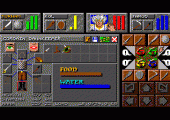
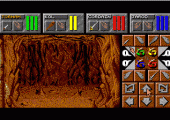
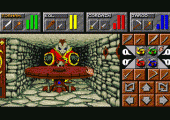
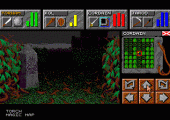
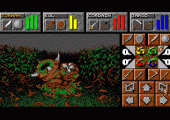
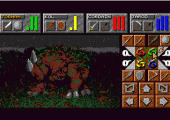
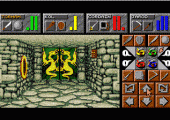
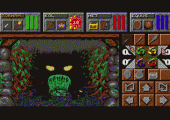
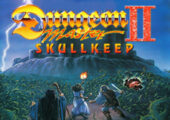
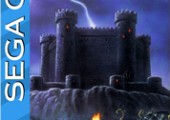
…oh and the graphics and backdrops are very well done in my opinion.
this one is exactly like Eye of the Beholder, gameplay wise atleast. I haven’t gotten into much yet, but the first person perspective helped me relate to it quicker than the average Final Fantasy style RPG. if you have the time and patience this game is indeed a 7 or 8/10. if you’re lookin to jump into a game and quickly blow stuff up then this game may not suit you right away, but since it’s pretty cheap to find online then grab it while you can and store it away for a rainy day.